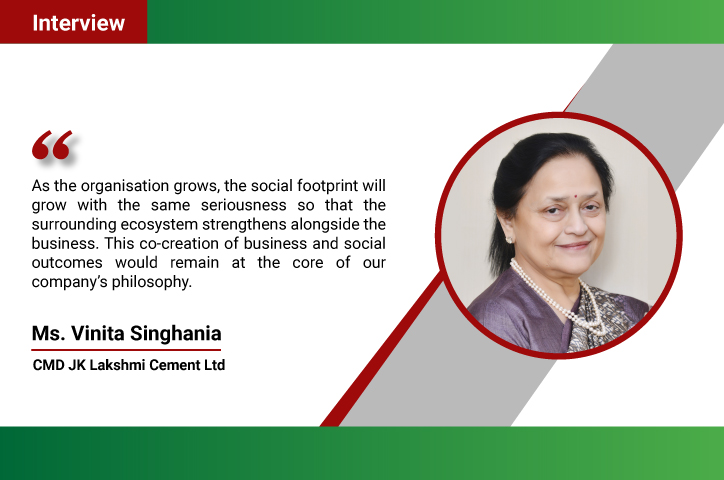Dr. Aditya Gupta currently holds the position of Chief Operating Officer at the Supply Chain Management Center, a prestigious center of excellence at IIM Bangalore. Additionally, he serves as the head of the newly established TCI-IIMB Supply Chain Sustainability Lab at IIM Bangalore. With a wealth of industry experience, Dr. Gupta spent over two decades as a supply chain practitioner, assuming various roles of responsibility at esteemed organisations such as Tata Group, TVS Group, Jindal Group, Virgin Mobile, and Moser Baer. In 2019, he successfully completed his PhD and made a seamless transition from the corporate world to academia, bringing a unique blend of practical expertise and academic insights to his current roles.
TCI-IIMB Supply Chain Sustainability Lab at IIM Bangalore. With a wealth of industry experience, Dr. Gupta spent over two decades as a supply chain practitioner, assuming various roles of responsibility at esteemed organisations such as Tata Group, TVS Group, Jindal Group, Virgin Mobile, and Moser Baer. In 2019, he successfully completed his PhD and made a seamless transition from the corporate world to academia, bringing a unique blend of practical expertise and academic insights to his current roles.
In this insightful article, Dr. Gupta delves into the adoption of green logistics as a robust and sustainable policy to minimize the environmental impact of supply chain activities. Drawing upon his expertise, he explores the strategies and approaches that drive effective implementation of green logistics while highlighting the multitude of benefits associated with sustainable supply chain management. Moreover, Dr. Gupta emphasises the pivotal role of collaboration among stakeholders in successfully achieving sustainable supply chain practices.
..........................................................
The majority of large corporations globally and in India have pledged to achieve net zero emissions within the next decade or two. In industries other than steel, cement, and aluminium, which require substantial energy for transformation, most emissions occur within their supply chains.The emissions are generated from different phases of the supply chain, encompassing the production and transportation of raw materials, transportation of finished products from factories to warehouses, distributors, and customers, as well as the use and end-of-life disposal of the products. It is imperative to address the emissions generated from the supply chain to achieve the net zero goal set by corporations. The decarbonization of the supply chain has the potential to be a transformative factor in corporate efforts to combat climate change.
Sustainable supply chain management (SSCM) is the practice of integrating sustainable practices and principles into all stages of the supply chain, from the sourcing of raw materials to the disposal of end products. SSCM aims to reduce the environmental impact of supply chain operations, promote social responsibility, and ensure long-term economic viability.Some of the key areas of focus include reducing carbon emissions, conserving resources, ensuring ethical labor practices, and promoting the circular economy.
There are several benefits to implementing sustainable supply chain management practices. Firstly, it can help companies improve their reputation and brand image by demonstrating a commitment to environmental and social responsibility. Secondly, it can help companies reduce risks associated with supply chain disruptions, regulatory penalties, and reputational damage. Thirdly, sustainable practices s=reduce the consumption of energy and resources this lowering the cost of supply chain. Finally, it can create new opportunities for innovation and collaboration by promoting sustainable practices throughout the supply chain.
Logistics includes transportation, warehousing, packaging, and distribution, among other activities in the supply chain.
Green logistics refers to the implementation of sustainable and environmentally friendly practices in logistics operations. Green logistics aims to minimize the environmental impact of logistics operations by reducing emissions, waste, and energy consumption.
There are five key logistics variables that contribute to the environmental impact of logistics: distance, mode of transportation, equipment, load, and operation. These variables determine how far products are being moved, the mode of transportation used, the type of equipment and fuel consumed, how much product is loaded, and how well the logistics operation is executed. By considering these variables, it is possible to design greener logistics systems. Following are some of strategies which the companies may use to make their logistics greener:
Modal Shift: Promoting the use of more sustainable transportation modes, such as rail or sea, instead of road or air.
Efficient Routing and Planning: Optimizing routes and schedules to reduce the distance and time travelled by vehicles, thus reducing emissions and energy consumption.
Efficient Vehicles: Improving engine technology, reducing vehicle weight through the use of lightweight materials, optimizing aerodynamics, and utilizing low rolling resistance tires can enhance vehicle fuel efficiency.
Alternate Fuels: The use of alternative fewer emitting fuels, such as natural gas, biofuels, electricity, and hydrogen, can significantly reduce emissions from commercial transportation.
Network Redesigning: The redesign of the distribution network to place distribution centres where demand is highest can help reduce the total weight-distance travelled, without compromising customer service.
Higher Payload vehicles: By consolidating cargo and shifting to higher payload vehicles while ensuring maximum vehicle utilization, it is possible to significantly reduce emissions.
Operations Excellence: One way of operating transport vehicles and vessels on less fuel is to run them at their engines’ optimal level. "Slow steaming’ or ‘Eco-driving' of vehicles can sustainably reduce emissions.
Green Warehousing: Implementing energy-efficient lighting, insulation, and heating systems, using renewable energy sources, and reducing waste and water consumption.
Packaging Optimization: Minimizing the use of packaging materials, using eco-friendly materials, and promoting the reuse and recycling of packaging materials.
To achieve sustainable supply chain management, companies need to work closely with suppliers, customers, and other stakeholders. By working together, companies can create a more sustainable future for all.




 TCI-IIMB Supply Chain Sustainability Lab at IIM Bangalore. With a wealth of industry experience, Dr. Gupta spent over two decades as a supply chain practitioner, assuming various roles of responsibility at esteemed organisations such as Tata Group, TVS Group, Jindal Group, Virgin Mobile, and Moser Baer. In 2019, he successfully completed his PhD and made a seamless transition from the corporate world to academia, bringing a unique blend of practical expertise and academic insights to his current roles.
TCI-IIMB Supply Chain Sustainability Lab at IIM Bangalore. With a wealth of industry experience, Dr. Gupta spent over two decades as a supply chain practitioner, assuming various roles of responsibility at esteemed organisations such as Tata Group, TVS Group, Jindal Group, Virgin Mobile, and Moser Baer. In 2019, he successfully completed his PhD and made a seamless transition from the corporate world to academia, bringing a unique blend of practical expertise and academic insights to his current roles.













.jpg)




